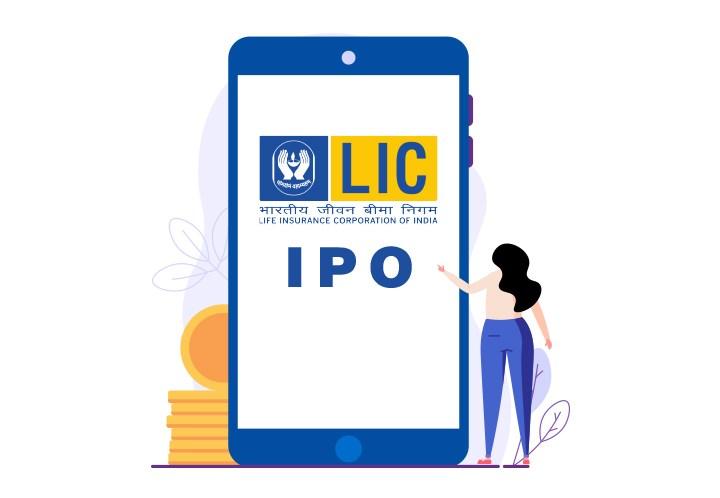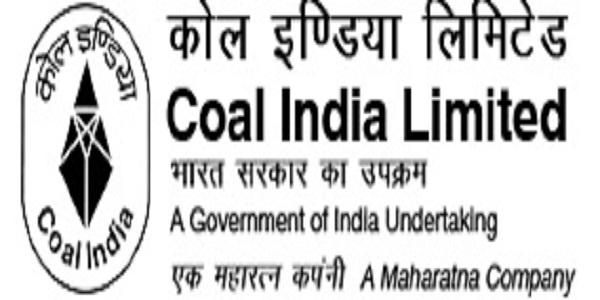In this article, we’ll check out the stories of the seven biggest IPOs in India, examining the factors that helped some to success while others faced challenges.

7 Biggest IPOs of India
Below is the list of 7 Largest IPOs of India
- LIC India IPO
- PayTM IPO
- Coal India IPO
- Reliance Power IPO
- GIC India IPO
- ONGC IPO
- SBI Cards and Payment IPO
#1. LIC IPO

Established in 1956, the Life Insurance Corporation of India (LIC) Limited is a prominent government-owned insurance business in India. Renowned for its extensive history and commitment to providing affordable insurance plans, LIC has played a significant role in shaping the insurance landscape in the country.
IPO Announcement and Background:
During the Union Budget of 2021-22, Finance Minister Nirmala Sitharaman announced the Government of India’s plan to disinvest a portion of its stake in LIC. This announcement marked a significant step in the financial sector, creating anticipation for one of the most awaited Initial Public Offerings in the country.
LIC IPO Details:
After a delay of more than a year, the LIC IPO was finally launched in 2022. Here are the key details of the LIC IPO:
- IPO Date: 04-05-2022 to 09-05-2022
- IPO Size: Rs. 21,000 crores
- IPO Price Range: Rs. 902 to Rs. 949
- Listing Date: 17-05-2022
Post-IPO Performance:
- Current Price: Rs. 655.50 (-20.66%)
- Current Market Cap: Rs. 4,15,236 crores
Despite the decline in the current price post-listing, LIC’s IPO has secured its place as the biggest IPO in India, surpassing Paytm, which held the top spot from November 2021 to May 2022.
This successful IPO not only reflects investor confidence in LIC but also underscores the significance of the insurance sector in the Indian financial market. As the landscape evolves, LIC continues to play a pivotal role in providing financial security through its diverse range of insurance offerings.
Also Read : What are Pre-IPO Stocks (Unlisted Shares) – Benefits and Risks
#2. PayTM IPO

Paytm, a prominent fintech company owned by One97 Communications, created significant buzz in the financial markets when it filed its Draft Red Herring Prospectus (DRHP) with the Securities and Exchange Board of India (SEBI). The anticipation surrounding the Initial Public Offering (IPO) was justified as it unfolded to become India’s second-largest public offering, making headlines across the nation.
Key Details of PayTM IPO:
1. Offer Details:
- Paytm aimed to raise a staggering Rs. 18,300 crores through its IPO.
- The funds were allocated between a fresh issue of Rs. 8,300 crores and the remaining as an Offer For Sale (OFS).
2. IPO Timeline:
- The IPO was open for subscription from 8th to 10th November 2021.
3. Pricing:
- The IPO price was set in the range of Rs. 2,080 to Rs. 2,150 per share.
4. Listing Date:
- Paytm made its debut on the stock exchanges on 18th November 2021.
5. Current Market Performance:
- As of the latest available data, the current market price stands at Rs. 533.00, with a market capitalization of Rs. 34,680 crores.
The IPO Journey:
Paytm’s IPO journey was not without its share of twists and turns. The offering garnered significant attention, not only for its size but also for its potential impact on the Indian financial landscape.
1. Short-Lived Triumph:
- Paytm briefly held the title of India’s largest IPO, dethroning Coal India, which had held the position for 11 years from October 2010 to November 2021.
2. Lackluster Response:
- Despite the initial excitement, the IPO faced challenges. It received a lukewarm response, particularly from High Net Worth Individuals (HNIs), who largely avoided the offering.
3. Financial Realities:
- At the time of the IPO, Paytm was not profitable, and the prospect of profitability in the near future seemed remote. This lack of profitability influenced investor sentiment.
4. Listing Performance:
- Paytm IPO listed at a discount of 9.3% to its offer price, signaling a cautious start in the stock market.
5. Market Volatility:
- The stock witnessed a tumultuous debut, losing over a quarter of its value on the first day of listing. The closing price on NSE stood at INR 1,560 per share, reflecting a 27.44% decline from the IPO price.
The Paytm IPO, while capturing headlines as one of the largest in India, faced challenges in gaining investor confidence. The initial listing at a discount and subsequent market volatility highlighted the uncertainties surrounding the company’s financial performance. As the Indian fintech giant continues its journey in the public markets, investors keenly watch how it navigates challenges and capitalizes on opportunities in the dynamic landscape of financial technology.
#3. Coal India IPO

Coal India Limited, the world’s largest coal miner, etched its name in financial history with a groundbreaking Initial Public Offering (IPO) that surpassed expectations and set new standards for public offerings in India. This article delves into the remarkable journey of Coal India’s IPO, from its stellar debut to its current standing in the market.
Key Features of Coal India IPO:
1. Offering Dynamics:
- Coal India’s IPO was launched with a price band of INR 225 to INR 245 per share, offering a 5% discount to retail investors.
2. Historical Listing Date:
- The stock debuted on the National Stock Exchange (NSE) on November 4, 2010.
3. IPO Success Metrics:
- The IPO raised an astounding INR 15,200 crores, making it the largest IPO in India at the time.
- The subscription rate exceeded 15 times the initial offering, with a total subscription of over INR 240,000 crores.
4. Listing Performance:
- Coal India opened at INR 291 per share, providing a 25% listing return to retail investors who enjoyed a 5% discount.
- Closing the first day at INR 342.55 per share, the stock exhibited a remarkable growth of 47.17% from the retail investors’ IPO price.
5. Current Market Snapshot:
- As of the latest data, the current price stands at Rs. 225.85, with a market capitalization of Rs. 1,39,185 crores.
Evolution Over the Years:
1. Market Enthusiasm in 2010:
- In 2010, Coal India’s IPO generated significant interest akin to recent IPOs like LIC and Paytm, largely due to its substantial issue size.
2. CRISIL’s Stamp of Approval:
- The fact that CRISIL bestowed a Grade 5 rating to Coal India’s IPO elevated its profile, drawing attention to the robust fundamentals of the company.
3. Continued Journey:
- Post-IPO, those who acquired Coal India shares at the IPO allotment price of Rs. 245 experienced initial gains, with the stock reaching Rs. 422 on the NSE by May 31, 2011.
4. Market Shifts:
- However, market dynamics have led to fluctuations in the stock’s performance, with recent trading levels around Rs. 338 as of January 28, 2023.
Coal India’s IPO remains a landmark event in India’s financial landscape, representing both the triumphs and challenges of a government-backed entity entering the public markets. As the stock navigates market shifts and evolving investor sentiments, it continues to be a significant player in the energy sector, reflecting the broader evolution of the Indian stock market over the years
#4. Reliance Power IPO

In the dynamic landscape of Indian IPOs, Reliance Power’s entry in 2008 marked a significant chapter. Down below we will explore the highs and lows of Reliance Power’s Initial Public Offering (IPO), from the initial optimism that surrounded its launch to the hard lessons learned by investors in the aftermath.
Key Highlights of Reliance Power IPO:
1. Company Background:
- Established in 1995, Reliance Power specializes in power generation and distribution projects.
2. IPO Date and Details:
- The IPO was open for subscription from January 15 to January 18, 2008.
- The issue size amounted to Rs. 11,700 crores, with an IPO price range of Rs. 405 to Rs. 450 per share.
3. Listing Date and Market Performance:
- Reliance Power made its stock market debut on February 11, 2008.
- The opening day witnessed a topsy-turvy ride, starting with a 20% gain on the IPO price but eventually plummeting to ~Rs. 372 on the same day.
4. Current Market Snapshot:
- As of the latest data, the current price stands at Rs. 12.55, with a market capitalization of Rs. 4,669 crores.
The Rise and Fall:
1. IPO Hype and Factors at Play:
- Reliance Power’s IPO garnered attention amid India’s push for power infrastructure, coupled with the reputation associated with the Reliance name.
- CRISIL assigned a Grade 4/5 rating to the IPO, emphasizing its significance in the market.
2. Subscription Frenzy:
- The IPO witnessed overwhelming demand, getting subscribed over 72 times within the first minute of opening, setting a record.
3. Listing Day Challenges:
- Despite a brief rally to Rs. 599 on the listing day, the stock settled at Rs. 372, down 17% from the issue price.
4. Post-Listing Woes:
- The stock struggled to recover, and despite bonus share offerings, it never surpassed its issue price.
- As of the latest data, the stock has experienced an 84% fall from the adjusted issue price for retail investors.
Hard Lessons Learned:
1. Investor Woes:
- Investors who held onto their shares have seen a significant erosion of wealth, with the stock never turning profitable.
- A hypothetical investment of Rs 10,000 in Reliance Power IPO would be worth just Rs 1,636 today.
2. Collective Optimism vs. Reality:
- The IPO witnessed widespread optimism, with record demat accounts opened and various investors, from common individuals to High Net Worth Individuals (HNIs), participating.
3. Reflection on Collective Wisdom:
- The subsequent bear carnage, coupled with the US subprime crisis, or the company’s own fundamentals, led to the steep fall.
- The enduring lesson: collective wisdom can sometimes be grossly wrong, emphasizing the unpredictable nature of the stock market.
Reliance Power’s IPO serves as a stark reminder of the unpredictable nature of the stock market, where initial optimism can be overshadowed by unforeseen challenges. As investors reflect on this chapter, the hard lessons learned from Reliance Power’s journey underscore the importance of due diligence and caution in navigating the complexities of the financial market.
#5. GIC IPO

Established in 1972, the General Insurance Corporation (GIC) of India stands as a formidable reinsurer, operating globally and holding the title of India’s largest reinsurer by gross premiums. This article delves into the journey of GIC’s Initial Public Offering (IPO), from its ambitious beginnings to the challenges it faced in the market.
Key Features of GIC IPO:
1. Company Overview:
- GIC, founded in 1972, is a reinsurance company with a global footprint, particularly prominent in India, Africa, and the Middle East.
2. IPO Date and Details:
- The IPO was open for subscription from October 11 to October 13, 2017.
- The issue size amounted to Rs. 11,257 crores, with an IPO price range of Rs. 855 to Rs. 912 per share.
3. Listing Date and Current Market Snapshot:
- GIC made its stock market debut on October 25, 2017.
- As of the latest data, the current price stands at Rs. 182.50, with a market capitalization of Rs. 32,017 crores.
The Rollercoaster IPO Journey:
1. Reinsurance Complexity:
- GIC’s role in reinsurance involves dividing and reducing premium costs for companies not just in India but also across continents.
2. Government Disinvestment:
- The Indian government, the owner of GIC, disinvested a part of its stake in 2017, paving the way for the IPO.
3. Subscription Dynamics:
- Despite being one of the biggest IPOs in India, GIC’s public issue faced challenges. HNIs largely avoided it, but retail investors were offered a discount resulting in marginal gains.
4. Listing Day Volatility:
- GIC IPO listed at a discount of 7% to the issue price of ₹912 on the NSE, further tumbling and closing at ₹898, 1.5% lower than the IPO price.
- Retail investors, however, gained 3.5%, being allotted shares at ₹867.
5. Post-Listing Challenges:
- GIC Re’s IPO, the third-largest in India at the time, managed to scrape through with 1.37 times subscription but faced a tepid response from retail investors.
6. Ongoing Market Performance:
- The stock’s current price is down by close to 70% since its IPO, aligning with the trend observed in many top IPOs.
Market Sentiments and Outlook:
1. Concerns and Disappointment:
- GIC disappointed investors with the stock currently trading over 73% below its issue price.
2. Global and Domestic Factors:
- The weak post-listing performance echoed trends seen in other insurance companies in India, reflecting concerns about valuations and global market conditions.
3. Future Prospects:
- Despite the challenges, analysts believe the outlook for India’s insurance sector remains attractive, given its relatively under-penetrated status and potential benefits from rising income levels.
GIC’s IPO journey, marked by ambition and challenges, reflects the intricate dynamics of the financial markets. As investors reflect on the trajectory of GIC’s stock, it provides valuable insights into the complexities of the insurance sector and the evolving landscape of India’s IPO space.
#6. ONGC IPO

Founded in 1956, the Oil and Natural Gas Corporation (ONGC) stands tall as a public sector undertaking, playing a pivotal role in India’s energy sector. This article unveils the narrative of ONGC’s Initial Public Offering (IPO), a landmark event that not only opened new avenues for public investment but also contributed to ONGC’s journey of becoming a Maharatna company.
ONGC’s Significance in India’s Energy Landscape:
1. Founding Principles:
- ONGC, established in 1956, has been a key player in producing crude oil and natural gas through exploration, contributing significantly to India’s energy needs.
2. Maharatna Recognition:
- The Government of India bestowed upon ONGC the prestigious title of Maharatna, reserved for companies with superior financial health, attesting to ONGC’s robust balance sheet.
3. Profit Leadership:
- In a 2019 survey, ONGC emerged as the highest profit-maker in the Public Sector Undertaking (PSU) sector, further solidifying its position in the Indian corporate landscape.
The Pioneering ONGC IPO:
1. Public Debut Decision:
- In 1994, ONGC made a historic decision to go public, offering a 20% stake to public investors while retaining the majority under government ownership.
2. Landmark IPO Date:
- The IPO unfolded between March 5, 2004, and March 13, 2004, marking a significant milestone in the history of India’s capital markets.
3. Issue Details:
- ONGC’s IPO raised an impressive Rs. 10,534 crores, solidifying its status as the biggest company in India by net worth at that time.
- The IPO price band ranged from Rs. 680 to Rs. 750 per share.
4. Listing and Current Market Snapshot:
- ONGC got listed in March 2004, marking its presence on the stock exchanges.
- As of the latest data, the current price stands at Rs. 145.15, with a market capitalization of Rs. 1,82,288 crores.
ONGC’s Evolution and Contributions:
1. Navratna and Maharatna Status:
- ONGC achieved Navratna status in 1997, showcasing its consistent growth. The elevation to Maharatna in 2010 further underscored its financial prowess.
2. Economic Impact:
- The IPO played a crucial role in enhancing ONGC’s balance sheet and amplifying its contributions to the Indian economy.
Market Impact and Success:
1. Market Prominence:
- ONGC’s IPO is remembered as a prominent event in the Indian markets, raising over Rs. 10,000 crores and drawing attention from investors nationwide.
2. Investor Returns:
- Launched with a price band of Rs. 680 – Rs. 750 per share, the IPO not only offered a 5% discount to retail investors but also provided substantial returns through consistent dividends and capital appreciation.
ONGC’s journey from a government-owned entity to a Maharatna company is interwoven with the success of its IPO. The pioneering move to go public not only marked a shift in ownership structure but also contributed significantly to India’s energy landscape. As ONGC continues to evolve, its IPO remains a testament to the synergy between public investment and corporate growth in the dynamic Indian market.
Also Read : How IPO Grading System works in India?
#7. SBI Card and Payments IPO

SBI Card and Payments, a major player in the financial landscape, ventured into the public market with its Initial Public Offering (IPO) in March 2020. This article explores the significant details of the SBI Card IPO, its objectives, market reception, and the subsequent journey amid the challenges posed by the Covid-19 pandemic.
SBI Card and Payments at a Glance:
1. Inception and Ownership Structure:
- Established in 1998, SBI Cards and Payments emerged from a collaboration between SBI and GE Capital, with a 60-40% ownership split.
2. Mission and Growth:
- The primary objective was to facilitate wider access to credit cards and diverse payment solutions for Indians.
- Over the years, SBI Card has grown to become the second-largest credit card issuer in India.
The SBI Card IPO:
1. IPO Dates and Dynamics:
- The IPO was launched from March 2 to March 5, 2020, with a price band of Rs. 750-755 per share.
- The issue size amounted to a substantial Rs. 10,355 crores.
2. Market Response and Subscription:
- The IPO received an overwhelming response, particularly from Qualified Institutional Buyers (QIB) and High Net Worth Individuals (HNI).
- The subscription rate reached an impressive 26.5 times.
- The grey market premium gmp was also high
3. Listing Amidst Challenges:
- Despite robust subscription, the IPO faced challenges due to the onset of the Covid-19 pandemic.
- The listing, which occurred on March 16, 2020, saw the stock listed at a discount.
4. Current Market Snapshot:
- As of the latest data, the current price stands at Rs. 718.50, with a market capitalization of Rs. 67,765 crores.
SBI Card in the Larger Context:
1. Ecosystem and Market Presence:
- SBI Card operates within the ecosystem of SBI companies listed on the share market.
- Other notable entities include SBI Life Insurance and the parent entity SBI itself.
Challenges and Resilience:
1. Pandemic Impact:
- The listing at a discount can be attributed to the unprecedented challenges brought about by the Covid-19 pandemic.
2. Market Dynamics:
- Despite the initial challenges, SBI Card showcased resilience in navigating the volatile market conditions.
Future Prospects and Market Engagement:
1. Ongoing Market Presence:
- SBI Card continues to be a significant player in the financial market, with its IPO contributing to the ecosystem of SBI companies.
2. Beyond the IPO:
- The article hints at forthcoming information on SBI Life’s IPO, showcasing the ongoing dynamism within the SBI group.
The SBI Card and Payments IPO stands as a testament to the dynamism of the financial markets, with its successful subscription, listing challenges, and subsequent resilience. As SBI Card charts its course in the financial landscape, its journey serves as a case study in navigating unforeseen challenges and maintaining a robust market presence.
Conclusion:
The big IPO stories in India show the varied experiences and changes in the country’s money markets. Despite a drop in its post-listing price, LIC’s IPO confirmed its position as India’s largest, indicating investor trust in insurance. Paytm’s IPO, initially the second-largest, had troubles in keeping investor confidence, revealing challenges in the fintech sector.
Coal India’s IPO in 2010 set records, showing high market interest. Its stock performance over the years reflects changing market trends. Reliance Power’s IPO is a warning about the unpredictable stock market, emphasizing the need for careful investment choices.
GIC’s IPO highlights challenges even for major players in insurance, revealing complexities in public offerings. ONGC’s 1994 IPO not only helped it become a Maharatna company but also showed how public investment transformed India’s energy sector.
SBI Card and Payments’ IPO, during the Covid-19 pandemic, demonstrated resilience. Its journey reflects the ongoing changes in financial markets, staying connected with the SBI group.
In conclusion, these IPOs together show the complex and changing nature of India’s money markets. Their successes, challenges, and lessons contribute to the broader story of economic growth and market changes.
If you want to undersand the basics of IPOs and how they work, read our this IPO Basics post.
Don’t Miss to Read Below IPO Related Informative Articles:
- Difference Between Equity IPO and Debt IPO
- What is ASBA in IPO? Benefits & Application Process
- What is Flipping in IPO? – Explained With an Example
- All About Non-Convertible Debentures (NCDs)
- What is an Oversubscribed IPO and Its Effects?
- How the IPO Grading Works In India?
- What Is the IPO Cycle In Stock Market?
- Most Common and Popular Key Terms Related to IPO
- What is Book Building Process in IPO? Fixed Pricing Vs Book Building
- Syndicate Member: Role in IPO, Types and Syndication Risk
- 15 Step Guide on How to Analyse an IPO
- What is Roadshow in IPO and What is its Purpose?
- Price Band in IPOs: How It is decided?
- What Is Cut-Off Price in IPOs – Why is it Important?
- How to Buy IPO Online in India – Procedure and Eligibility Criteria

